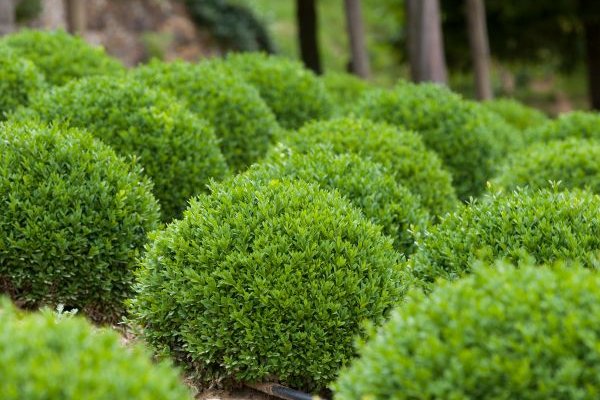Dwarf English Boxwood is a good variety for gardeners looking for an attractive hedge plant that is low in maintenance and suited to small yards and intimate garden styles. This slow-growing boxwood shrub reaches 3 to 4 feet in height. It bears small, rounded evergreen leaves that grow in dense, clustered tufts. Well, its small size with thick, bushy foliage makes it perfect for low hedges edging pathways and plant beds.
In this article, we will learn about growing and the care of Dwarf English Boxwood.
Plant Descriptions
Plant type: Shrub, Perennial
Scientific name: Buxus Sempervirens ‘Suffruticosa’
Common name: Boxwood
Family: Buxaceae
Species: Sempervirens
Season: Early spring
Native Area: Asia, Africa, South and Central America
What time of year is best to plant Dwarf English Boxwood?
Spring is the best time for planting a Dwarf English Boxwood. This helps the plant to develop a strong root system before the winter. In case you are living in an area with mild climates, you can also plant in the early fall. However, planting boxwood should be avoided during mid-summer and winter. Mid-summer often brings very hot and dry conditions which can slow down the growth of a boxwood plant. Likewise, the extreme cold of mid-winter can be very damaging to newly planted boxwoods. To keep the plant healthy and strong in the long run, it is important to let it get established before harsh seasonal conditions arrive.
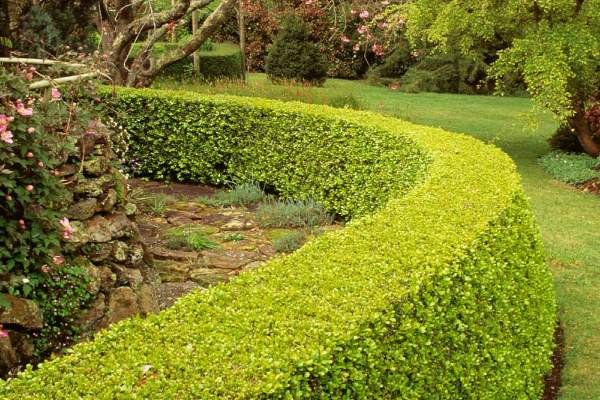
Types of Dwarf English Boxwood
Japanese Boxwood
Japanese Boxwood, also referred to as Littleleaf Boxwoods, is an evergreen shrub renowned for its fine-textured foliage. They also produce small light-green flowers during spring, usually from April to May, that change to cream color after maturity. Although these flowers are not large, they produce a mildly sweet fragrance for a short period. These boxwood can be grown in USDA hardiness zones 6 through 9. Similarly, it can be grown up to 5 to 6 feet tall and spread out 4 to 6 feet wide.
‘Greenmound’ Boxwood
Greenmound is a compact, rounded evergreen boxwood with broad leaves, growing about 3 feet tall by 4 feet wide. The leaves are smooth around the edges, narrow, and shaped like an ellipse, with a shiny dark green color. Even on the coldest days of winter, the leaves often remain bright green. This is a slow-growing plant that can stand very low temperatures and does well in USDA hardiness zones 4 through 8. It bears small, inconspicuous greenish-cream flowers in April and May, which are grouped towards the ends of the branches and on the sides.
‘Morris Midget’ Boxwood
Morris Midget is a small, dense boxwood that is extremely slow-growing. This cultivar grows best in USDA hardiness zones 6 through 8. This variety typically grows to be 10 to 12 inches tall. In the winter, it may bronze up if it is exposed to full sun but usually corrects itself to its normal green color when the seasons come around. It sometimes flowers sparingly. It bears small, oval-shaped leaves of medium green.
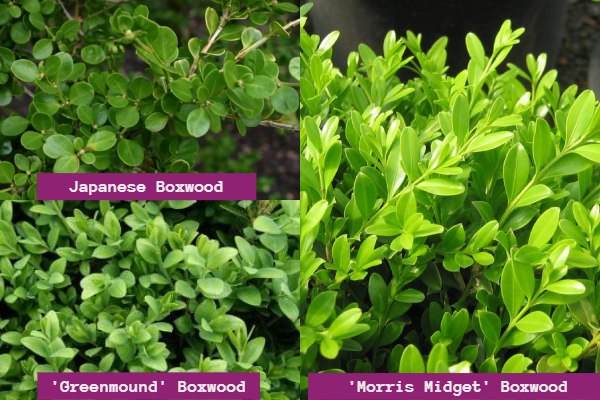
How to Grow and Care for a Dwarf English Boxwood?
Light
Dwarf English Boxwood tolerates full sun to full shade and needs at least five to six hours of sunlight each day. In hot areas, it’s best to plant it where it gets some afternoon shade. If you live in a place with dry winter winds, pick a spot that offers some protection.
Soil Requirement
This variety of Boxwood grows best in soil that is well-drained and not waterlogged. It thrives in sandy loam soil with a slightly alkaline pH. Once the plant is well-established, it is quite resilient and can tolerate periods of drought effectively.
Water
Water deeply once or twice a week during the first growing season. This helps the root to become filled with water and stay insulated. During the second growing season, you should water once a week if it hasn’t rained that much. After that, water only when needed or if your soil drains too quickly.
Temperature and Humidity
Boxwood can grow in USDA zones 4 to 8, but not all types can handle the very cold temperatures in zone 4. To protect them in cold climates, wrap the shrubs loosely in burlap tied with twine. This helps prevent the tips of the stems from dying back in cold weather. Further, boxwoods prefer average humidity but can also tolerate dry and very humid conditions.
Fertilizer
This variety of Boxwoods doesn’t require much fertilizer. However, if you want to, you can use a balanced, slow-release fertilizer once or twice a year. You can also add manure on top of the soil in the fall.
Pruning
Regular annual trimming helps keep your boxwood plant neatly shaped with minimal effort. It is best to trim during late winter or early spring, just before the new growth starts. This enables winter tender growth to avoid excessive damage due to winter colds and aids in good branching for a vigorous, full shrub.
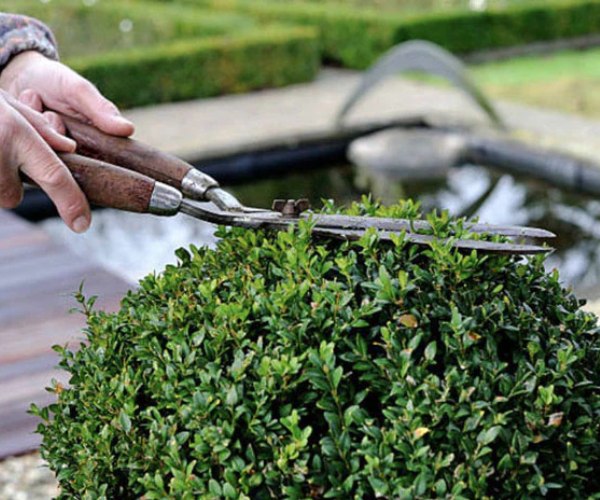
Pests and Disease
Bronzing is an ultimate, common problem of boxwood, mostly due to exposure to the sun and wind in the winter. To prevent this, select more resistant cultivars to bronze. Good drainage is important, as poor drainage can aid in causing leaf spots and root rot. In addition, treat pests like leafminer, boxwood mites, and boxwood psyllid with horticultural oil for maintenance of the health of the boxwood.
Methods of Propagating Dwarf English Boxwood
Dwarf English Boxwood can be propagated in two major methods, either by stem cuttings or seed. Both of these methods have their specific procedure and considerations which are mentioned below:
Propagation by cuttings
The best time to propagate Dwarf English Boxwood through stem cuttings is in the summer when the plant bears plenty of new growth. Following are the detailed steps for propagating this plant:
Select cuttings: The boxwood plant should have fresh, light-green growth. Take clean, sharp pruning shears and cut 4 to 6 inches of lengths of the stem from the outer growth of the boxwood.
Prepare the cuttings: Remove the leaves from the lower part of each cutting, leaving only 3 or 4 at the top. This is so they do not rot in the soil. Dip the cut end of each into rooting hormone to foster root growth.
Soil Preparation: Fill a 4-inch pot with good potting soil. Using a pencil or any other appropriate tool, poke holes in the soil for the cuttings. This will help the rooting hormone that’s on the cuttings to stay there when you plant them.
Planting the Cuttings: Put one cutting into each hole. You don’t need to rub off the rooting hormone. You can have as many as four cuttings in one pot, spaced out evenly.
Aftercare: If so desired, place the pots in a plastic bag and move them to a warm location with bright indirect sunlight while rooting. Do not put them in direct sun. The rooting process should take anywhere from 3 weeks to 3 months but may take longer.
Propagated by Seedlings
Boxwood can also be propagated from seed, but it requires patience since the seed may take up to six months to germinate. Detailed steps are as follows:
Soil preparation: Take a small container and fill it with a seed-starting mix. The mix should be consistently moistened. Not soggy but just damp this would allow the seeds to germinate and grow well.
Cold-Treat seeds: Lightly rub seed coat with sandpaper. Soak seeds overnight in warm water. Then, drain and seal them in a plastic bag with peat moss that has been moistened with water. Store it inside a refrigerator between 33°F to 41°F for 4 to 8 weeks; the seeds must be kept moist but not too wet.
Sow the Seeds: After stratification, seed about one-sixteenth of an inch into a large container of moist seed-starting mix. Space 3 inches apart and cover with plastic wrap to hold in humidity. Mist daily to keep the soil moist.
Aftercare: Boxwood seeds may take six months or more to germinate. As seedlings appear, remove plastic wrap and place it under grow lights or next to a sunny window.
Transplanting: Space out the seedlings when they get about four inches tall by removing weaker ones, then transplant the rest to pots about six inches wider in diameter than their root balls. Grow them outdoors in those pots until they can be planted outside in late spring.
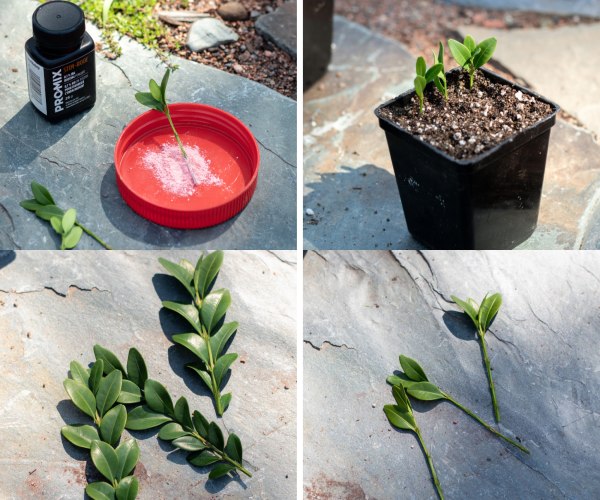
Conclusion
In conclusion, the Dwarf English Boxwood is a resilient and versatile shrub that stands out for its low-maintenance qualities. It has dense, evergreen foliage and a controllable height that makes it excellent for making low hedges and decorative borders for small gardens. It also thrives in light conditions, ranging from full sun to shade, and includes regular watering with occasional pruning to maintain its attractive shape. Spring planting will allow the roots to grow nicely, and proper care will keep this beauty looking great for years to come. Whether you choose to propagate from cuttings or seeds, this shrub adds a classic touch of elegance and green to your outdoor area with minimal effort.
Also read, A Complete Guide to Grow and Care for Hens and Chicks Plants
Frequently Asked Questions
1. What is Dwarf English Boxwood?
Dwarf English Boxwood is a hardy, low-maintenance shrub that maintains a compact size with very dense green foliage. It is best known for creating low hedges and decorative borders in small gardens.
2. What are the best conditions for planting Dwarf English Boxwood?
Boxwood does its best in well-drained soil and a place that can provide 5-6 hours of sun per day. It can tolerate full sun to full shade.
3. When is the best time to plant Dwarf English Boxwood?
The ideal time to plant is early spring for a strong development of roots. In regions with mild climates, planting in early fall may be considered. Never plant during mid-summer or in winter.
4. How can I propagate Dwarf English Boxwood?
It can be propagated by taking stem cuttings in summer or directly grown from seeds. Seeds need cold stratification and may take up to six months to germinate.
5. What are some common issues with Dwarf English Boxwood?
Bronzing may happen during winter and is caused by sun and wind. Well-draining soil will help prevent leaf spots and root rot. Watch for pests such as leafminers and boxwood mites.
